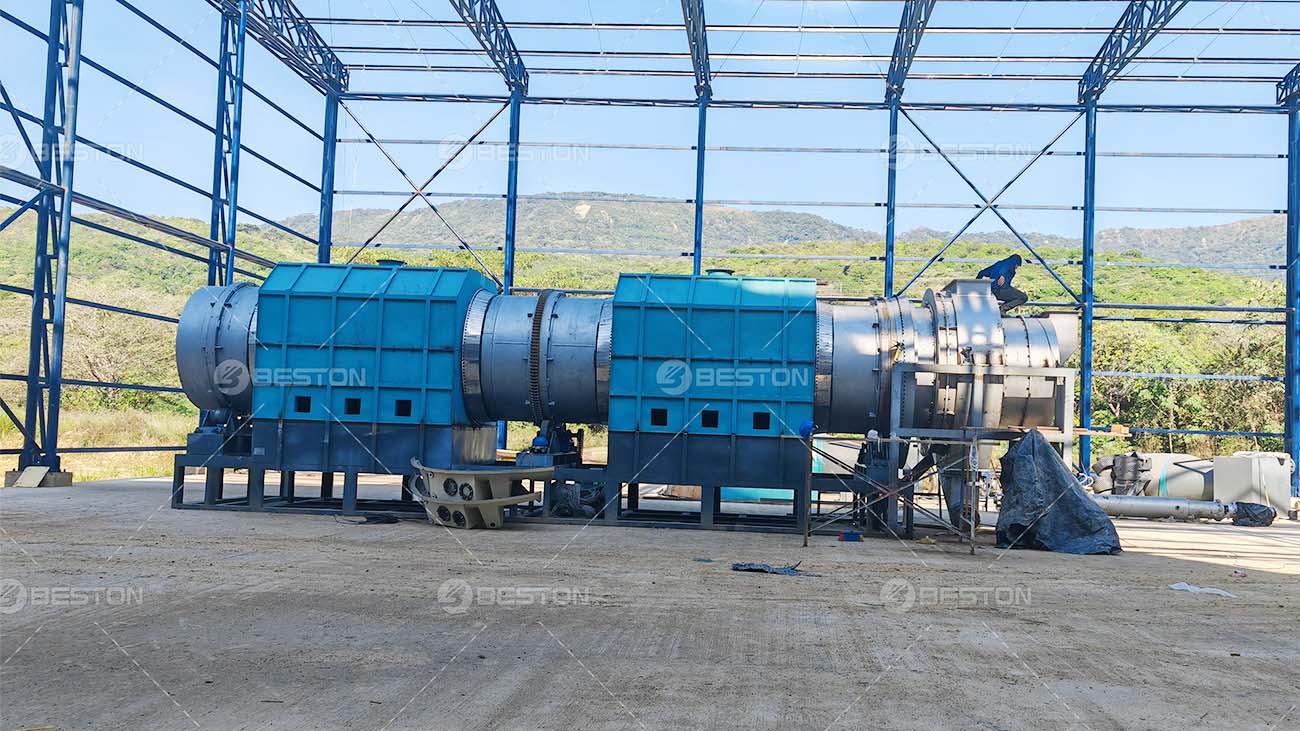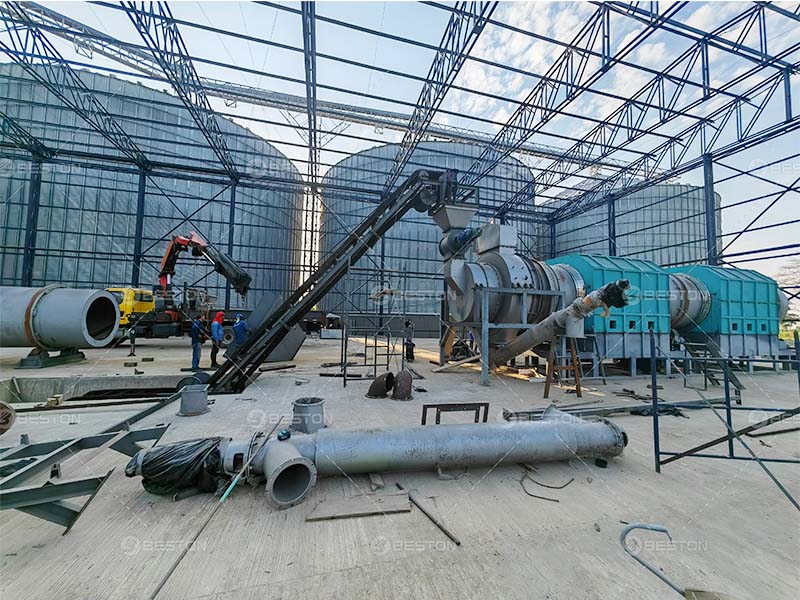The production efficiency of a rice husk carbonizer is a crucial determinant of its overall effectiveness and economic viability. Several factors influence how efficiently a rice husk carbonizer operates, impacting both the quality and quantity of the resulting biochar. Understanding these factors is essential for optimizing performance and achieving desired outcomes in the carbonization process.

Feedstock Characteristics
Particle Size
The particle size of the rice husk feedstock plays a significant role in the efficiency of a rice husk carbonizer. Smaller particles generally facilitate more uniform heating and better contact with the heat source. However, excessively fine particles can lead to issues such as increased dust generation and potential clogging of the carbonizer. Conversely, larger particles may not heat as uniformly, potentially resulting in incomplete carbonization. Therefore, achieving the right particle size distribution is crucial for optimal performance.
Moisture Content
Moisture content in rice husks directly affects the energy consumption and overall efficiency of the carbonization process. High moisture content requires additional energy to evaporate the water before the actual carbonization can occur. This not only increases fuel consumption but also can lead to inconsistent product quality. Ideally, the rice husks should be pre-dried to reduce moisture content before being fed into the carbonizer. Properly managed moisture levels ensure efficient heat transfer and better control over the carbonization process.
Carbonization Temperature
Heat Transfer Efficiency
The temperature at which the biomass carbonization plant operates significantly impacts the carbonization efficiency. Optimal temperature ranges facilitate the breakdown of organic materials and the formation of stable carbon structures. Insufficient temperatures can result in incomplete carbonization, while excessively high temperatures might lead to the degradation of the biochar, reducing its quality and yield. Efficient heat transfer mechanisms, such as well-designed heating elements and insulation, are essential to maintaining the desired temperature throughout the carbonization process.
Thermal Management
Effective thermal management within the rice husk carbonizer is crucial for maintaining consistent temperatures and preventing thermal losses. Advanced carbonizers employ sophisticated control systems to regulate temperature and ensure uniform heat distribution. Insulation materials, such as high-temperature ceramic fibers, are used to minimize heat loss and enhance energy efficiency. Proper thermal management not only improves production efficiency but also contributes to the longevity of the equipment.
Airflow and Ventilation
Oxygen Supply
Controlled airflow and ventilation are critical for the efficiency of a rice husk carbonizer. The presence of oxygen affects the combustion process and the formation of char. Inadequate airflow can result in incomplete combustion, leading to lower-quality biochar and increased emissions. Conversely, excessive oxygen supply can cause overheating and potential damage to the carbonizer. Balancing airflow and ensuring proper ventilation are essential for maintaining optimal carbonization conditions and achieving high-quality biochar.
Gas Recirculation
Some advanced rice husk carbonizers incorporate gas recirculation systems to improve efficiency. These systems capture and reuse the gases generated during the carbonization process, enhancing energy recovery and reducing overall fuel consumption. Efficient gas recirculation contributes to a more sustainable operation by minimizing waste and optimizing the use of available energy resources.
Carbonizer Design and Construction
Reactor Design
The design of the carbonization reactor influences the efficiency and effectiveness of the rice husk charcoal making furnace. Factors such as reactor size, shape, and material affect heat distribution and retention. Well-designed reactors ensure uniform heating and efficient conversion of rice husks into biochar. The choice of materials, such as heat-resistant alloys or ceramics, also impacts the durability and thermal performance of the reactor.
Loading and Unloading Mechanisms
Efficient loading and unloading mechanisms are vital for maintaining production efficiency and minimizing downtime. Automated systems for feeding rice husks into the carbonizer and removing the final product can streamline operations and reduce manual labor. Properly designed mechanisms ensure consistent feed rates and reduce the risk of blockages or other operational issues that could affect performance.
Operational Practices
Maintenance and Calibration
Regular maintenance and calibration of the rice husk carbonizer are essential for sustaining production efficiency. Routine inspections and servicing of components, such as heating elements, insulation, and airflow systems, help prevent malfunctions and ensure optimal performance. Calibration of temperature and airflow controls is also necessary to maintain precise operating conditions and achieve consistent results.
Process Optimization
Continuous monitoring and optimization of the carbonization process contribute to improved efficiency and product quality. Adjustments to parameters such as temperature, airflow, and feed rates can be made based on real-time data to enhance performance. Implementing process optimization strategies and utilizing advanced control systems can lead to more efficient and reliable operation of the rice husk carbonizer.
Environmental Considerations
Emissions Control
Effective emissions control is an important aspect of rice husk carbonization. Proper management of by-products and emissions, such as particulate matter and volatile organic compounds, helps minimize environmental impact and comply with regulatory standards. Advanced carbonizers incorporate emissions control technologies, such as filters and scrubbers, to reduce pollutants and improve overall environmental performance.
Resource Utilization
Optimizing the use of resources, including energy and feedstock, contributes to the sustainability and efficiency of the rice husk carbonizer. Implementing practices that maximize resource recovery and minimize waste can enhance the overall efficiency of the carbonization process. For example, capturing and reusing heat or gas generated during carbonization can reduce the need for additional fuel and improve energy efficiency. Beston Group Co., Ltd. provides consumers with a comprehensive rice husk recycling solution. Please feel free to contact us.

Conclusion
The production efficiency of a rice husk carbonizer is influenced by a multitude of factors, including feedstock characteristics, carbonization temperature, airflow, and carbonizer design. Effective management of these factors is crucial for optimizing performance and achieving high-quality biochar. By understanding and addressing these factors, operators can enhance the efficiency of their rice husk carbonizers, leading to improved economic and environmental outcomes.